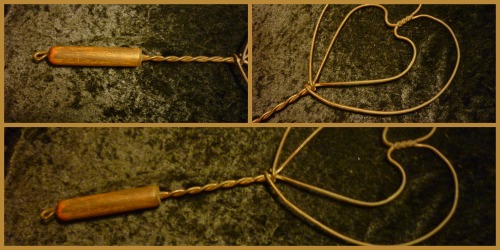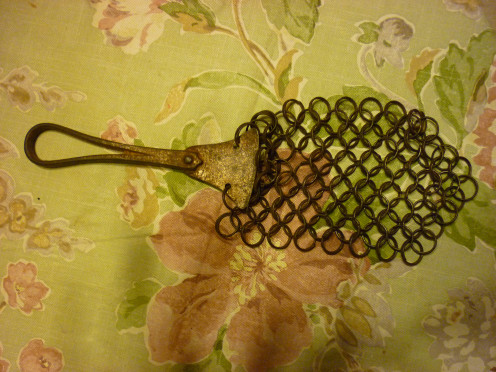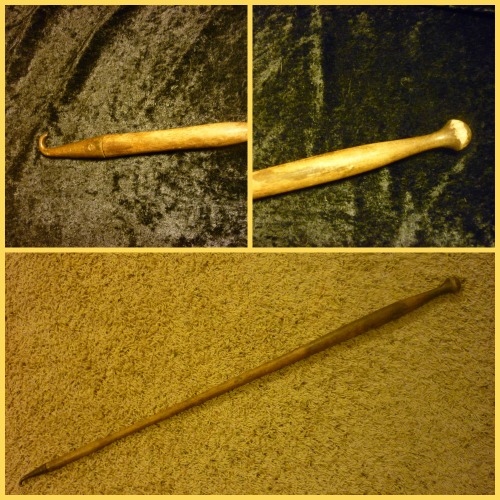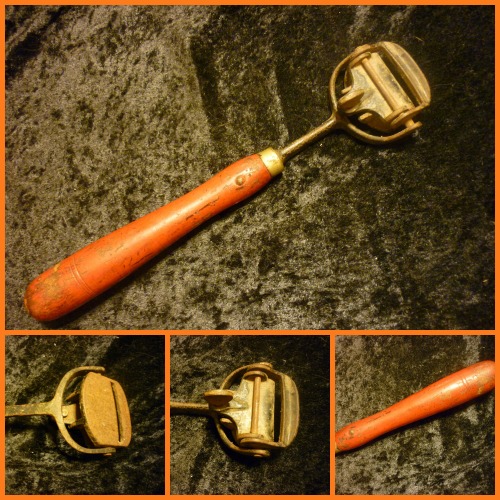What Is It?
What Is It?
For years, I hunted down and collected items that were not used in the household anymore. At show and when customers came in and head time. I would play what is it with them. It was amazing how many still remembered these items, but as the audience becomes younger the easier it was to stump them. There are so many interesting things; Dirt wood floor stamps, tools used on wagons, baskets used for fishing, and the list goes on. The following are some of those “What is it?” items.
Cast Iron and Wood Household Items
Cast Iron and wood have been staples in the household for ages. Cast Iron is also called steel, wrought iron and metal. Cast Iron is a malleable iron. Malleable meaning that has been toughened by gradual heating and slow cooling. Cast Iron was first used in China 206 B.C. to 220 A.D. in the evaporation process to get salt. The use of wood in household items proceeds the use of iron. The pieces made from these items are durable. As you search through an antique mall you will often find many interesting items made of wood and metal. In my search for “What is it?” items the following items are some of the interesting ones I found.
The European Rug Whip

The European Carpet Beater
This 1930’s rug beater was used as a way to clean the rugs prior to the arrival of the vacuum cleaners in the 1950’s. They were made of durable thick, twisted wire and wood handles. The one pictured is made into two heart shapes made of wire then the wire is twisted to give it strength down and through the wood handle. The rug or carpet was hung over the clothesline or railing and the dust beat out of them. Some people liked to do this cleaning chore in the winter, on the snow. They would lay the rug/carpet face down on the snow and beat out the dust and dirt. The snow would freeze the insects. This practice has been discouraged, because it would leave an aesthetically unpleasant dark spot on the clean white snow. So glad for the arrival of the vacuum for whipping rugs is exhausting.
Chain Mail Scrubber

The Chain Mail Link Pot Scrubber
This ring chain type of scrubber arrived on the market in the 1920’s. It was introduced as a way to clean the cast iron skillets. You put a little oil and salt in the skillet and rub it clean. It is similar to the steel wool pads used on dishes these days. It is still recommended to use oil, salt and a ring chain pad to clean cast iron skillets to this day. The scrubber looks like an accident about to happen in the dish sink. It would also be work getting the scrubber clean.
Wall Map Extender Pull

The Wall Map Hook
This item is about thirty-eight inches long, wood pole that has a three-inch metal hook on the end. It has been identified as an antique long wooden handle metal button hook. The button hooks seen most often from the 1860’s to 1930’s was usually not longer than six inches in length. The length of the pole would make it awkward to maneuver as a button hook. There are also cargo hooks the 1850’s to 1900’s. The hooks on the ends of these poles were shaped differently. I was told that this hook was an extended handle for the wall map. Wall maps came on the scene in 1507. In the 50’s, 60’s and 70’s you would find these maps in every history classroom. With the arrival of the computer wall maps are used less and less. Thus, the need for this tool no longer exists. Although, at the antique/flea market store there were many inventive uses found for this pole.
#70 Stanley Scraper

The #70 Stanley adjustable Box Scraper
This scraper is twelve inches long and has a two-inch cutter. The first scraper was made April 4, 1876 and the design was discontinued in 1958 by Stanley tools. It is malleable iron with a hardwood handle, generally made of maple. It is used to for removal of stencil markings, address labels from wood boxes and crates. It can be pushed or pulled when removing the labeling. It is was also used to plane wood floors. This item has been replaced with a more efficient tools. In the 1800’s tools were made to last, so fifty years since the last one was made; this scraper is still in great shape.
Oh, to the Durable
These items are not used these days, but they are still here half a century or more later and can still function in their original capacity. Will our brooms, dustpans or vacuum’s going to be around in fifty years? Will the future generations be able to understand their purposes? We have become a disposable society.
Dispose or Hoard?
What is the best plan for materials made for use?
This content is accurate and true to the best of the author’s knowledge and is not meant to substitute for formal and individualized advice from a qualified professional.
© 2015 Canita Prough








